The sun-kissed lands of ancient Kemet, a civilization steeped in wisdom and reverence for existence, held hair in a profound regard. It was more than adornment; it was a testament to one’s well-being, social standing, and connection to the spiritual realm. For those of us with deeply coiled strands, with textures that speak to resilience and ancestry, tracing the practices of ancient Egyptians offers a guiding hand back to a heritage of conscious care. How, then, did these ancient keepers of tradition apply plant-based color to hair, particularly textures that mirror our own rich, varied lineage?
This journey of discovery is not merely an academic exercise. It is an invitation to listen to the echoes of practices that speak directly to the very soul of a strand, revealing a deep connection to the earth’s bounty and an intuitive grasp of hair’s inherent spirit.

Roots
The story of how ancient Egyptians engaged with their hair, including its coloration, is intrinsically bound to their understanding of the natural world and the nuanced forms of beauty it offered. For textured hair, in particular, the ancient Egyptian approach was marked by an intuitive wisdom that recognized the strand’s unique architecture. While modern scientific classification systems categorize hair types with numerical and alphabetic precision, ancient civilizations understood hair through observation and practical application. Their lexicon, though not codified in the same manner as today’s trichology, was expressed through the rituals they enacted and the materials they chose.

What Did Ancient Egyptians Understand About Hair Anatomy?
The fundamental understanding of hair in ancient Egypt was experiential. They knew that hair, whether straight, wavy, or tightly coiled, responded to moisture, oils, and various treatments. Archaeological evidence, including examinations of preserved hair from mummies, indicates a range of hair textures present across the population, reflecting the diverse origins of the inhabitants of the Nile Valley. From the fine, straight strands to the more robust, spring-like coils, the Egyptians observed these variations and adapted their care accordingly.
Their focus rested on maintaining the hair’s integrity, its suppleness, and its visual appeal. The hair of Queen Tiye, for instance, grandmother to Tutankhamun, revealed beautifully preserved auburn waves, suggesting a knowledge of styling and preservation that transcended simple observation.
The Egyptians intuitively grasped that hair was not inert. It was a living extension, a conduit of identity. The external appearance of hair, its sheen and vitality, served as a marker of health and social standing.
This keen observation translated into a meticulous approach to hair care, where the application of plant-based dyes was not a separate, isolated act but an integrated part of a broader regimen. They would have noted how different preparations interacted with varying porosities and curl patterns, even if they lacked the precise scientific vocabulary we now possess.

How Were Hair Textures Categorized or Understood in Ancient Egyptian Society?
While ancient Egyptians did not articulate a formal “classification system” for hair texture as we do today with type 4C or 3B, their societal practices reveal an implicit understanding of diverse hair forms. Art and preserved remains show a spectrum from straight to wavy, to tightly curled and even dread-locked hair. Hairstyles, wigs, and hair extensions were adapted to these natural variations, signifying status, age, and gender. Elite women often wore elaborate wigs, skillfully crafted from human hair and plant fibers, which could be manipulated into intricate styles, including plaited, twisted, or crimped tresses.
Men of all classes might keep their hair short or shaved, while noblemen often sported sophisticated wigs. The presence of various hair tools, like combs from women’s tombs dating as early as 3900 BCE, some made of ivory with elaborate animal motifs, speaks to their dedication to managing a variety of hair forms.
The practice of shaving heads, common among priests for ritual purity and among the general population for hygiene and comfort in the hot climate, also demonstrates an adaptive approach to hair management. Wigs served as protective coverings, shielding natural hair from lice and the harsh sun, while also allowing for diverse stylistic expression regardless of one’s inherent hair texture. This nuanced approach, balancing natural hair with elaborate adornments, suggests a lived understanding of hair’s characteristics without needing a formal nomenclature.
Ancient Egyptian hair practices reflected an innate understanding of diverse hair textures, moving beyond mere aesthetics to signify status and spiritual connection.

What Were the Essential Plant-Based Elements for Coloring Hair?
When considering plant-based dyes, the ancient Egyptians primarily turned to what was readily available in their ecosystem and what offered reliable results. The undisputed leader in their natural color palette was Henna (Lawsonia inermis). This plant, thriving in the dry, warm climates of Egypt and beyond, yields a reddish-orange pigment known as lawsone.
Henna was not solely for hair; it colored nails, skin, and even fabrics. Its application to hair would typically result in a spectrum of red tones, from a gentle auburn to a vibrant reddish-brown, depending on the original hair color and the application’s frequency.
Beyond henna, evidence points to the use of Indigo (from plants like Indigofera tinctoria or Isatis tinctoria). While often associated with textiles, indigo’s deep blue pigment, when combined with henna, could create darker, richer brown and even black shades. The goal of achieving darker hues was significant, as dark hair often symbolized nobility and higher social standing in Egyptian society.
Archaeological findings have even suggested the use of substances like juniper berries mixed with oils to create a paste for darkening hair. These natural colorants were not merely about altering appearance; they also often possessed conditioning properties, strengthening the hair and scalp, aligning with the holistic approach to well-being prevalent in ancient Egyptian culture.
| Ancient Plant Source Henna (Lawsonia inermis) |
| Primary Color Reddish-Orange, Auburn |
| Heritage Application Covering gray hair, enhancing natural reddish tones, strengthening strands. Used post-mortem on mummies. |
| Modern Equivalent or Legacy Still widely used as a natural, conditioning dye, particularly for red and brown shades. |
| Ancient Plant Source Indigo (Indigofera tinctoria/Isatis tinctoria) |
| Primary Color Deep Blue (when mixed with henna, creates browns and blacks) |
| Heritage Application Achieving darker, more noble hair shades. Primarily textile dye, but hair use documented. |
| Modern Equivalent or Legacy Used in combination with henna for natural black or deep brown hair dyes. |
| Ancient Plant Source Juniper Berries |
| Primary Color Darkening (likely for black/dark brown) |
| Heritage Application Formulated into ointments with oils for a deep black color. |
| Modern Equivalent or Legacy Less common as a standalone dye today, but botanicals for darkening hair exist. |
| Ancient Plant Source Pomegranate Peel |
| Primary Color Various shades (often reddish-brown, darker) |
| Heritage Application Used to make hair dyes, sometimes combined with other materials like turmeric. |
| Modern Equivalent or Legacy Pomegranate extracts are found in some natural hair products for conditioning and color enhancement. |
| Ancient Plant Source The ancient Egyptians skillfully harnessed the earth's bounty to color and care for their hair, laying foundations for natural beauty practices that echo into the present. |

Ritual
The application of plant-based dyes in ancient Egypt transcended a simple cosmetic act. It was deeply rooted in ritual, personal expression, and a connection to the cycles of life and regeneration. For those whose hair sprung from the scalp in diverse textures, these practices were particularly resonant, speaking to a heritage where adornment was inseparable from identity and well-being. The process was often meticulous, reflecting the value placed on hair as a symbol of status and vitality.

How Were Plant-Based Dyes Applied to Hair in Ancient Egypt?
The application of plant-based dyes, primarily Henna, involved a careful process that maximized the pigment’s adherence and longevity, even on varied hair textures. The leaves of the Lawsonia inermis plant were typically dried and finely ground into a powder. This powder was then mixed with water, and often with oils, to create a thick paste.
The addition of oils, such as castor or almond oil, would have served multiple purposes ❉ aiding in the smooth application of the paste, conditioning the hair, and potentially helping the dye adhere more evenly to the hair shaft. For textured hair, which can be more porous and susceptible to dryness, the emollient properties of these oils would have been particularly beneficial, allowing the dye to penetrate and coat the cuticle layers effectively.
Once prepared, the paste would be applied directly to the hair. While specific tools for dye application are not extensively detailed, general cosmetic tools like combs made from fish bones were used to distribute oils evenly through the hair. It is reasonable to surmise similar tools or even simple spatulas might have been employed for dye application, ensuring thorough coverage from root to tip. Given the intricate hairstyles and wigs prevalent, the dye might have been worked into sections of hair, or applied to wigs and extensions before attachment.
The dye was allowed to sit for a period, allowing the lawsone molecule to bind with the keratin in the hair, imparting its characteristic reddish hue. This long-standing practice, documented in various findings, shows a clear intention not just to color, but to maintain the health and appearance of the hair for both the living and, tellingly, for the journey into the afterlife.
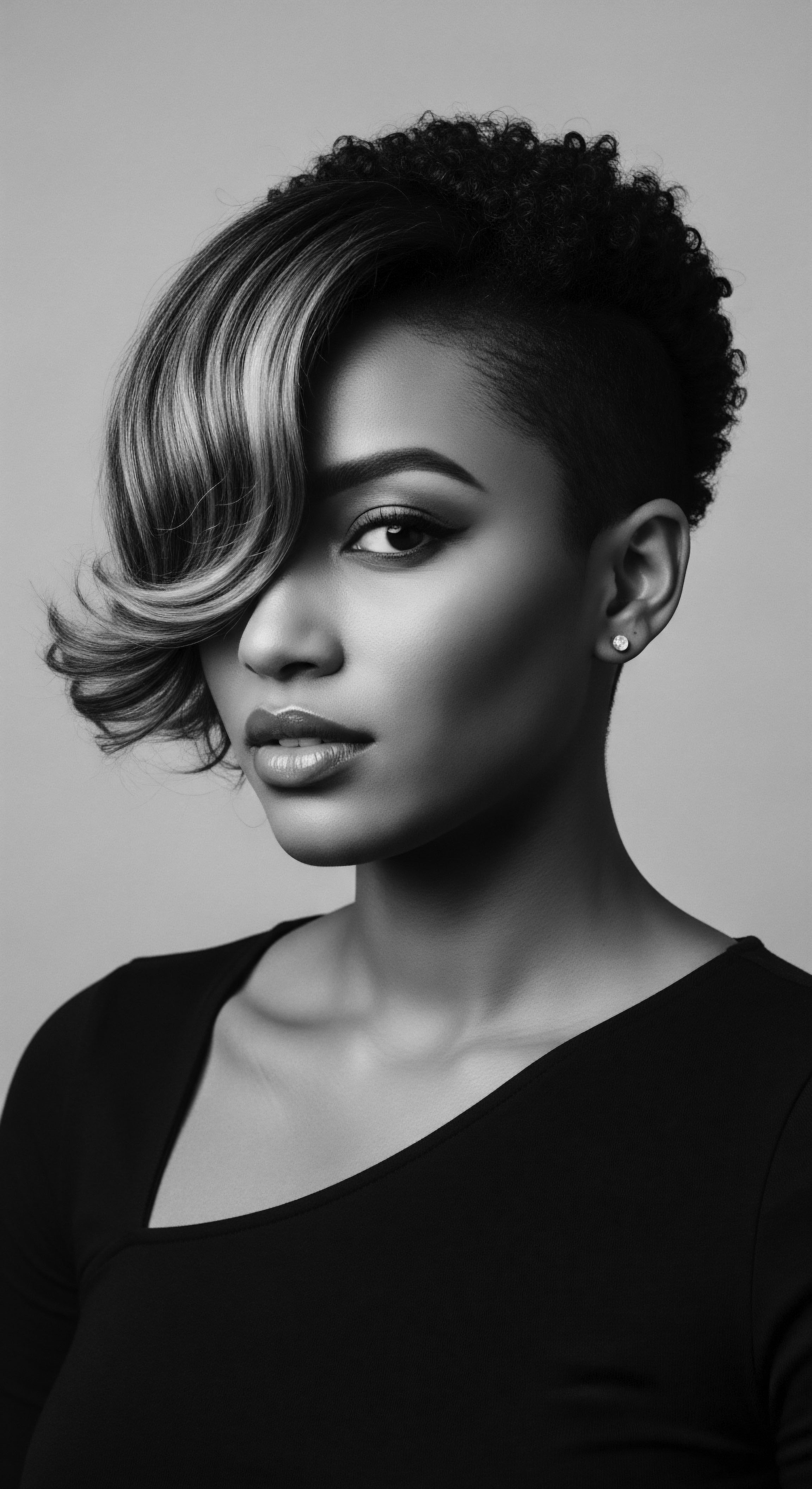
What Tools Facilitated Dye Application for Diverse Textures?
While the archaeological record does not specifically isolate tools solely for dye application, the broader context of ancient Egyptian grooming provides clues. We know that the Egyptians possessed an array of cosmetic implements. Combs, dating back to 3900 BCE, crafted from materials such as ivory, wood, and bone, were commonplace.
These combs, with varying tooth widths, would have been invaluable for detangling textured hair, parting it into sections, and ensuring even distribution of any hair treatment, including dye pastes. The smooth surfaces of these natural materials would have been gentle on the hair shaft, minimizing breakage, a particular concern for more delicate coil patterns.
Beyond combs, cosmetic spoons, some intricately carved, were used for mixing and applying various ointments and preparations. These spoons could easily have been repurposed for dye application. The use of the hands, as is common in traditional henna application even today, also played a significant role, allowing for direct contact and a tactile understanding of the hair’s saturation.
The fact that wigs were frequently dyed, both for the living and as funerary objects, also indicates a sophisticated approach. Wigmakers would have applied dyes to the hair fibers before constructing the elaborate pieces, allowing for precise color control and uniform results, irrespective of the hair’s original texture.
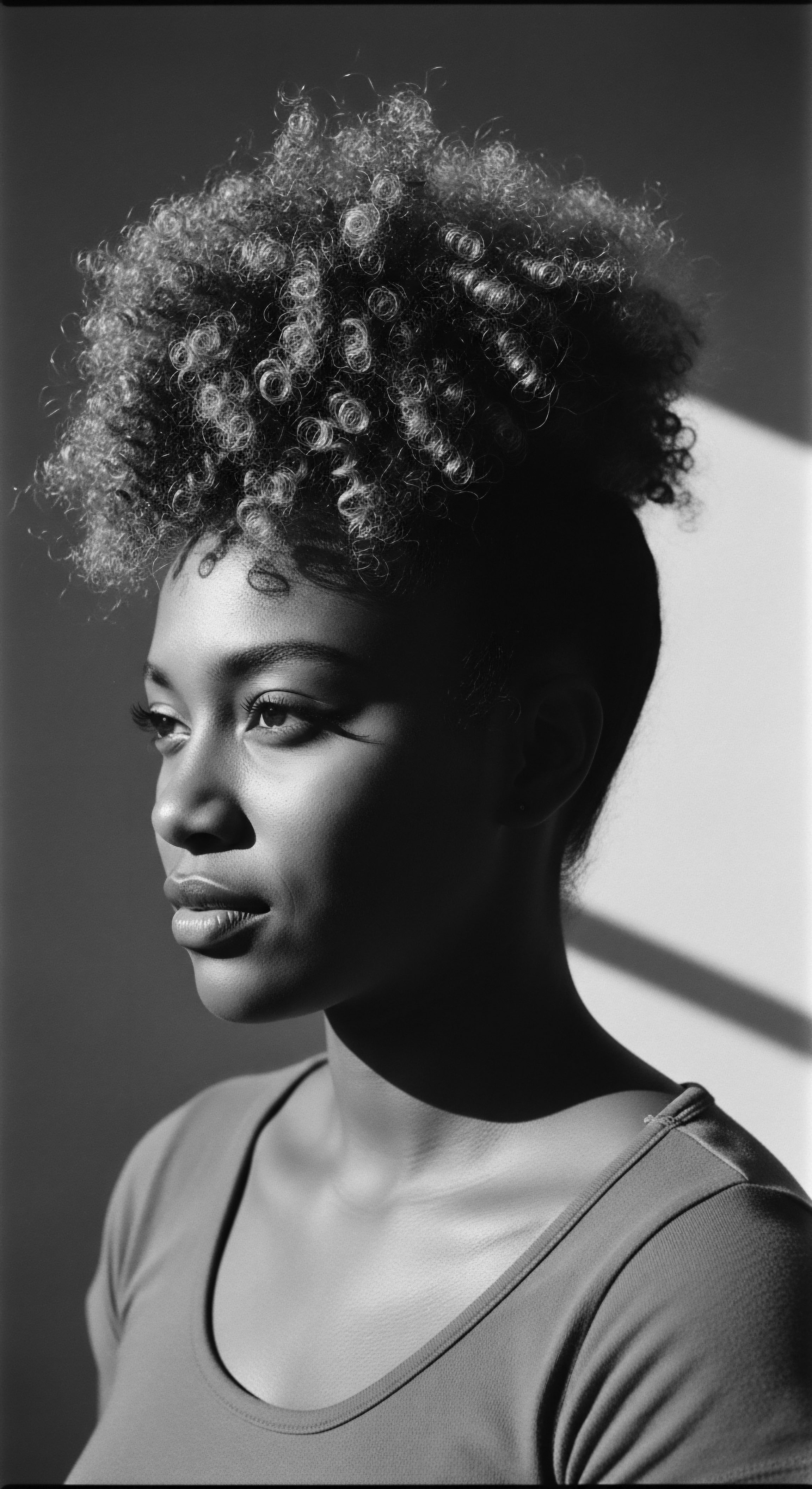
How Did Hair Color Transform Identity and Social Standing?
Hair color in ancient Egypt was never a mere aesthetic choice. It was deeply woven into the fabric of social status, identity, and spiritual belief. For communities with textured hair, altering its color could align one with prevailing beauty standards or ritualistic symbolism.
Darker shades, for instance, often represented Nobility and a higher social standing. This aspiration for dark, vibrant hair colors led many Egyptians to dye their hair, or their wigs, in rich, deep hues, often achieved through combinations of henna and darkening agents like indigo.
The practice of dyeing gray hair, observed in ancient Egyptian remains, underscores a desire to maintain a youthful appearance and, by extension, a connection to vitality and power. Ramesses II, a pharaoh of the Nineteenth Dynasty, had henna-dyed hair, a treatment possibly applied posthumously to restore his youthful appearance, even though his natural hair color was red. This act reveals the symbolic power attributed to hair color, extending beyond life into the journey of rebirth. Red hair, when natural, was associated with figures like the goddess Isis, symbolizing vitality and life, suggesting that the reddish tones imparted by henna might also have carried spiritual connotations.
The ability to maintain or alter hair color, especially for darker, more prized shades, often correlated with wealth and access to the resources needed for such preparations and their consistent application. Thus, the hues on one’s head communicated a subtle but powerful message about one’s place within the societal hierarchy, a silent language spoken through the visual poetry of hair.
The ceremonial application of dyes was a deeply personal ritual, connecting one’s physical presentation with cultural values and spiritual aspirations.

Relay
The practices of ancient Egyptian hair coloration, particularly on textured hair, extend far beyond simple historical footnotes. They speak to an enduring legacy of ancestral knowledge, a living archive of how communities have honored and transformed their strands. This relay of wisdom, passed down through generations, allows us to draw profound connections between elemental biology, ancient methods, and the contemporary resonance of hair as a marker of identity and heritage.
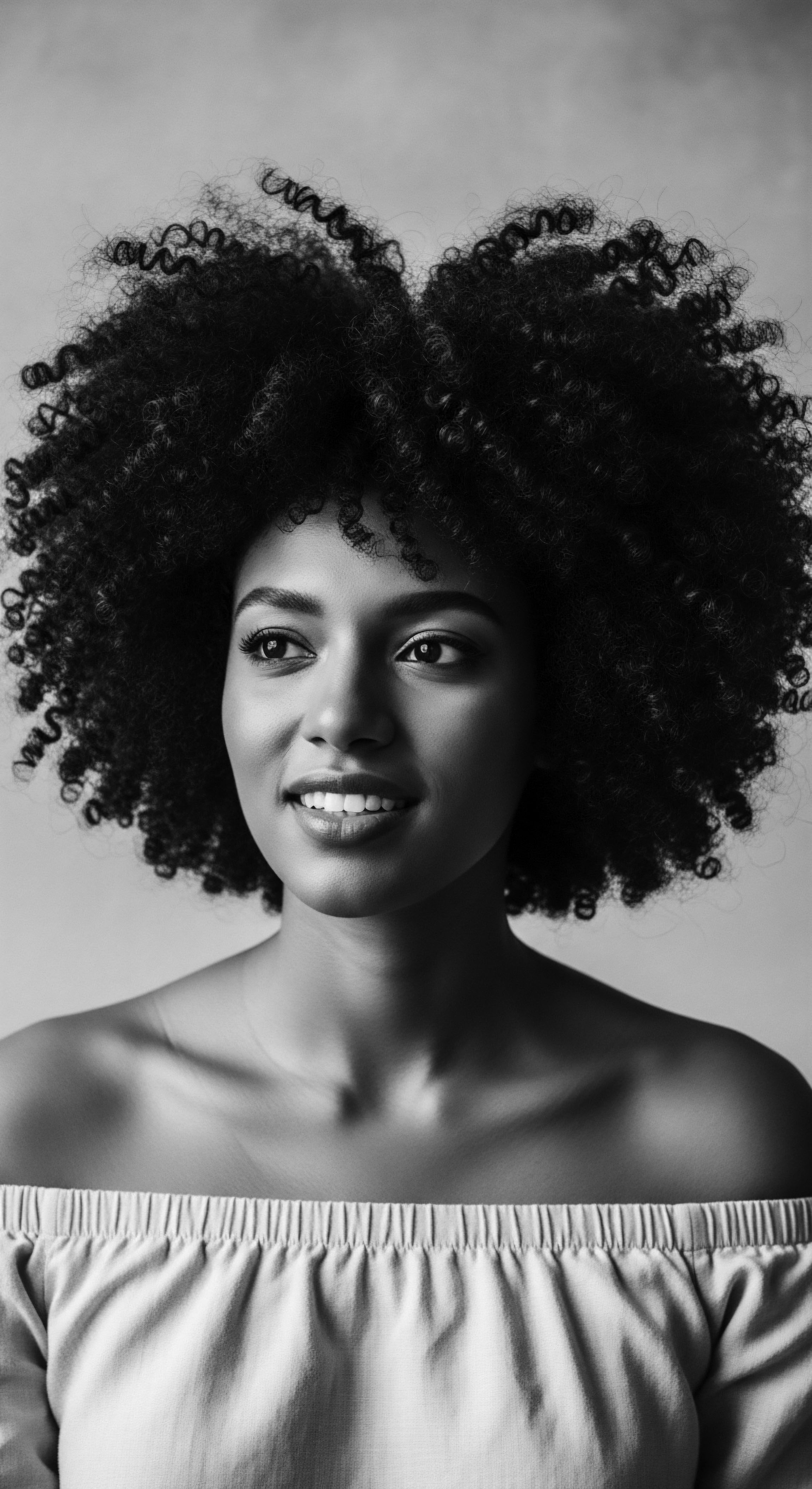
What Chemical Processes Guided Dye Absorption in Ancient Hair?
The efficacy of plant-based dyes on textured hair in ancient Egypt rested upon specific chemical interactions between the dye molecules and the hair’s keratin structure. Henna’s active pigment, Lawsone (2-hydroxy-1,4-naphtho-quinone), is a small molecule that interacts directly with the amino acids present in the hair’s keratin. Hair, especially textured hair, possesses a cuticle layer composed of overlapping scales. Lawsone’s small size allows it to penetrate these cuticle layers and bind to the keratin within the cortex of the hair.
This binding creates a lasting stain, making henna a permanent dye. The color produced depends on the hair’s original melanin content; on darker hair, henna imparts a reddish sheen, while on lighter hair, it yields a more vibrant red or orange.
For darker shades, the addition of Indigo was paramount. Indigo contains indigotin, a blue pigment. Unlike henna, indigo molecules tend to deposit more on the external layers of the hair shaft and adhere through a process of oxidation, where the colorless precursor molecule transforms into the blue pigment when exposed to air. When indigo is applied over henna, or mixed with it, the lawsone-keratin bond provides a reddish base, while the indigotin deposits create a blue-black overlay, resulting in deep browns or true blacks.
This sequential or combined application demonstrates an empirical understanding of how to achieve a broader spectrum of natural colors, especially crucial for those with naturally dark, textured hair seeking to maintain or intensify their hue, or cover signs of aging. The natural dyes’ capacity to coat and partially penetrate the cuticle layers, rather than chemically altering the hair’s core structure (as synthetic dyes do), also explains their conditioning properties and the absence of harsh chemical damage, a wisdom rooted in observation rather than molecular modeling.

Were There Specific Hair Treatments to Optimize Dye Adherence on Coils?
While explicit ancient texts detailing pre-dye treatments for specific hair textures are not abundant, the pervasive use of oils and fats in ancient Egyptian hair care suggests an intuitive conditioning practice that would have prepared hair for dye application. Ancient Egyptians routinely applied natural oils like Castor Oil, Almond Oil, and Moringa Oil, alongside animal fats, to their hair. These emollients served to hydrate, strengthen, and soften the hair, counteracting the arid desert climate. For textured hair, which naturally tends to be drier due to its coil pattern and the slower distribution of natural scalp oils down the hair shaft, these lubricating treatments would have been particularly vital.
A well-moisturized, softened hair strand, with properly laid cuticles, would provide a more receptive surface for dye adherence. The oils might have created a smoother canvas for the dye paste, allowing for more even distribution and preventing patchy results. Furthermore, the conditioning properties of these traditional oils could have helped to minimize any potential drying effects of the plant dye itself, preserving the hair’s elasticity and luster. Archaeological evidence, such as the discovery of fatty materials (palmitic and stearic acid) on the styled hair of mummies, suggests that conditioning was a regular practice, indicating a holistic approach to hair care that would undoubtedly have extended to preparing hair for coloration.
The ancient Egyptian mastery of natural colorants was a testament to their deep understanding of botanical properties and hair’s structural nuances.
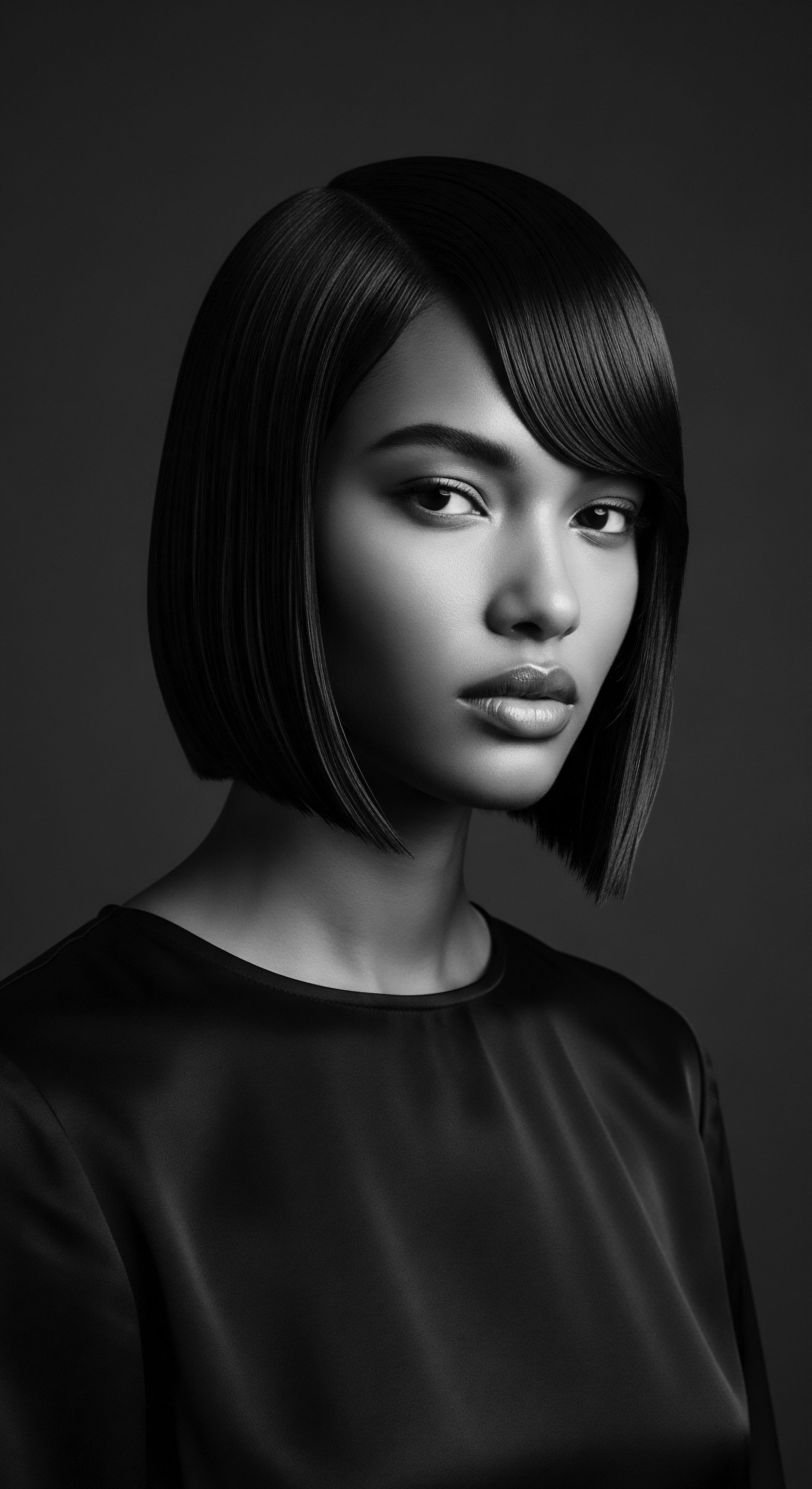
How Does Ancient Dyeing Inform Our Modern Appreciation for Textured Hair Heritage?
The ancient Egyptian application of plant-based dyes to textured hair holds a deep resonance for modern experiences, particularly within Black and mixed-race communities. The deliberate choice of natural colorants, the meticulous preparation, and the cultural significance assigned to colored hair reflect an ancestral commitment to self-adornment that respected the hair’s intrinsic nature. This historical practice counters many contemporary narratives that have, at times, devalued textured hair or promoted harsh chemical alterations. Observing ancient Egyptians’ use of henna and indigo on diverse hair types reminds us of a heritage where these natural dyes were seen as enhancements, not agents of structural change.
Consider the Mummy of a Woman from Amarna, dating back over 3,300 years, found with orange-red color on her graying hair, possibly from henna. This historical example speaks volumes. It illustrates a desire to maintain vibrancy and mask the signs of aging using natural, earth-derived ingredients, a practice that mirrors the motivations behind many modern natural hair journeys.
It is a powerful reminder that the impulse to color one’s hair is ancient, and that ancestral communities, including those in ancient Egypt, found sustainable, health-conscious ways to fulfill this desire. The continuity of henna’s use from ancient Egypt to contemporary natural hair communities worldwide serves as a tangible link to this rich heritage, demonstrating how traditional practices can offer chemical-free alternatives that align with holistic wellness.
Moreover, the symbolic meanings tied to hair color in ancient Egypt—such as dark shades representing nobility—echo the powerful statements that hair, including its color, makes within contemporary Black and mixed-race cultures. Hair has always been a canvas for identity, a means of cultural affirmation, and a connection to lineage. The ancient Egyptians’ reverence for hair, their sophisticated use of plant-based dyes, and their pragmatic yet sacred approach to hair care, offers a profound foundation for understanding and honoring the enduring legacy of textured hair heritage. It encourages us to view natural ingredients not as new discoveries, but as rediscovered ancestral wisdom, guiding us toward practices that honor both our hair and our roots.
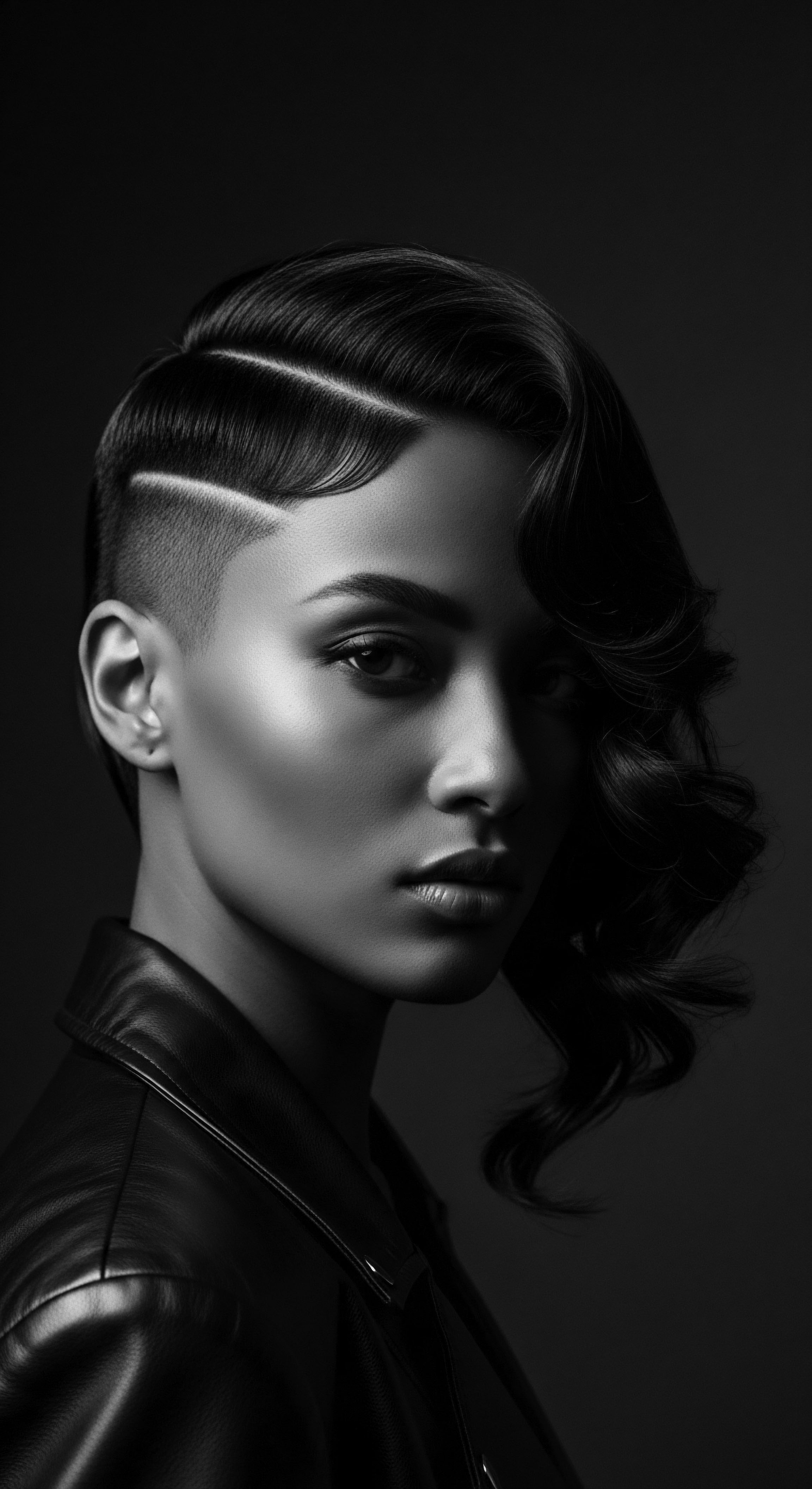
Reflection
As we trace the delicate yet enduring lines from ancient Kemet to our present moment, the journey into how ancient Egyptians applied plant-based dyes to textured hair reveals a timeless testament to human ingenuity and connection to the earth. It is a quiet symphony, humming with ancestral wisdom that saw hair not as a mere epidermal appendage, but as a vibrant extension of spirit, status, and self. The echoes of henna and indigo, painstakingly prepared and reverently applied, whisper tales of a civilization that instinctively understood the integrity of the hair strand, even the most exquisitely coiled or robustly textured. This historical practice, deeply infused with the Roothea ethos of ‘Soul of a Strand’, beckons us to remember that the pursuit of beauty, when rooted in natural rhythms and reverence for one’s lineage, becomes a profound act of self-affirmation.
The legacy of ancient Egyptian hair care, with its meticulous use of plant-based colorants, remains a powerful, living archive for textured hair heritage. It is a reminder that the pathways to radiant, authentic hair have always been, and continue to be, intertwined with the earth’s generous offerings and the collective memory of our forebears. This past, vibrant and palpable, continues to shape our understanding of hair, inviting us to honor its journey from elemental biology to the unbound helix of identity, a heritage ever-present, ever-inspiring.
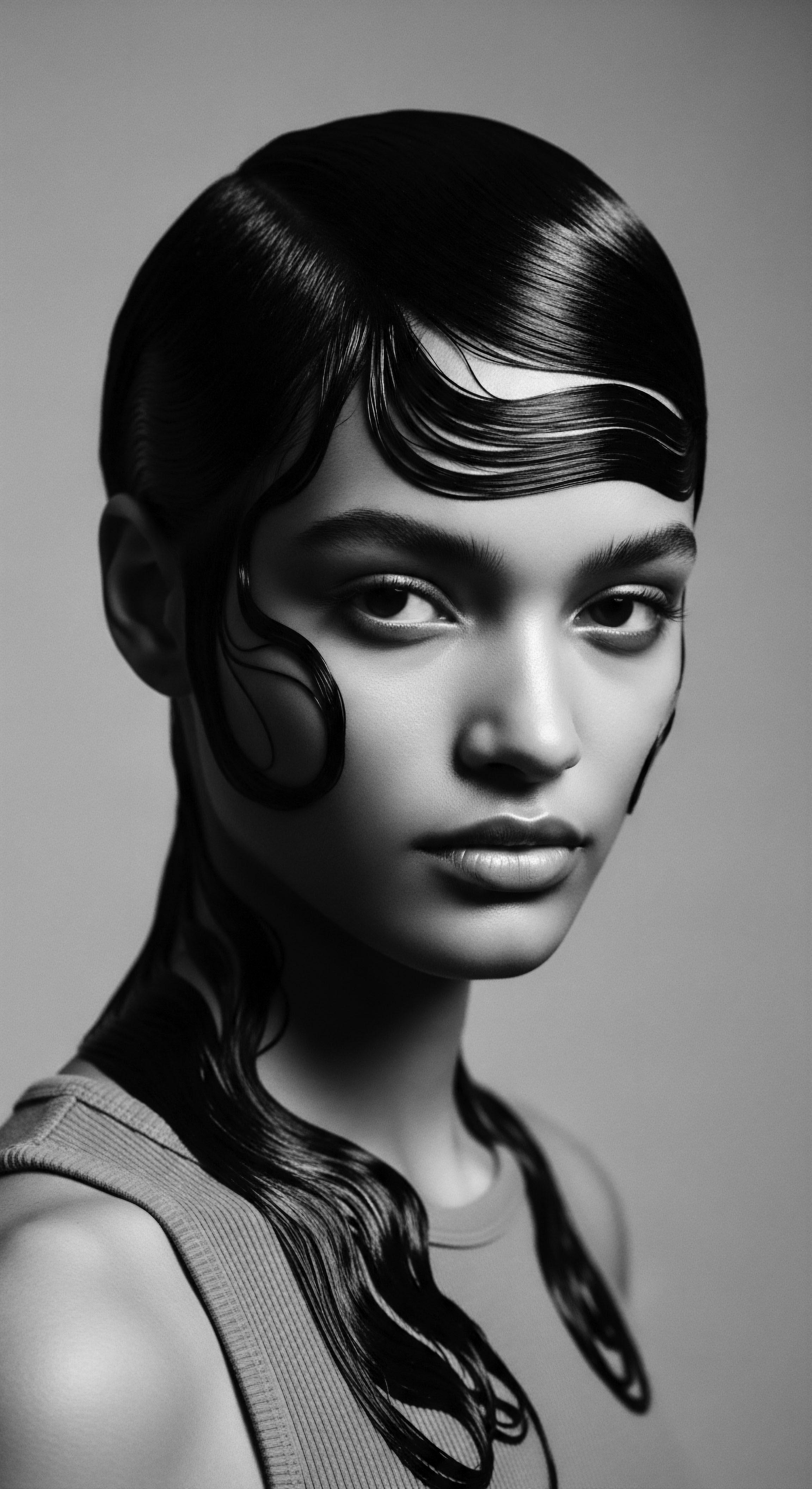
References
- Scott, D. A review of ancient Egyptian pigments and cosmetics. Stud. Conserv. 2016, 61, 185–202.
- Alchin, L. Egyptian Hairstyles. History Embalmed.org. Siteseen Ltd. 2017.
- Fletcher, J. Ancient Egyptian Hair and Wigs. 1995.
- Lythgoe, A. M. & Dunham, D. The Predynastic Cemetery N 7000 Naga-ed-Dêr Part IV. University of California Press. 1965.
- Brunton, G. & Caton-Thompson, G. The Badarian Civilisation and Predynastic Remains near Badari. Bernard Quaritch. 1928.
- Zgoda, M. The mysteries of the Egyptian hairstyles. UCL Blogs. University College London. 2013.
- Riesmeier, M. Keute, J. Veall, M.A. Borschneck, D. Stevenson, A. Garnett, A. Williams, A. Ragan, M. Devièse, T. Recipes of Ancient Egyptian kohls more diverse than previously thought. Sci. Rep. 2022.
- David, Rosalie. Handbook to Life in Ancient Egypt. Facts on File. 1998.
- Wilkinson, Richard H. The Complete Gods and Goddesses of Ancient Egypt. Thames & Hudson. 2003.
- Grafton Smith, G.E. The Royal Mummies. Duckworth. 2000.
